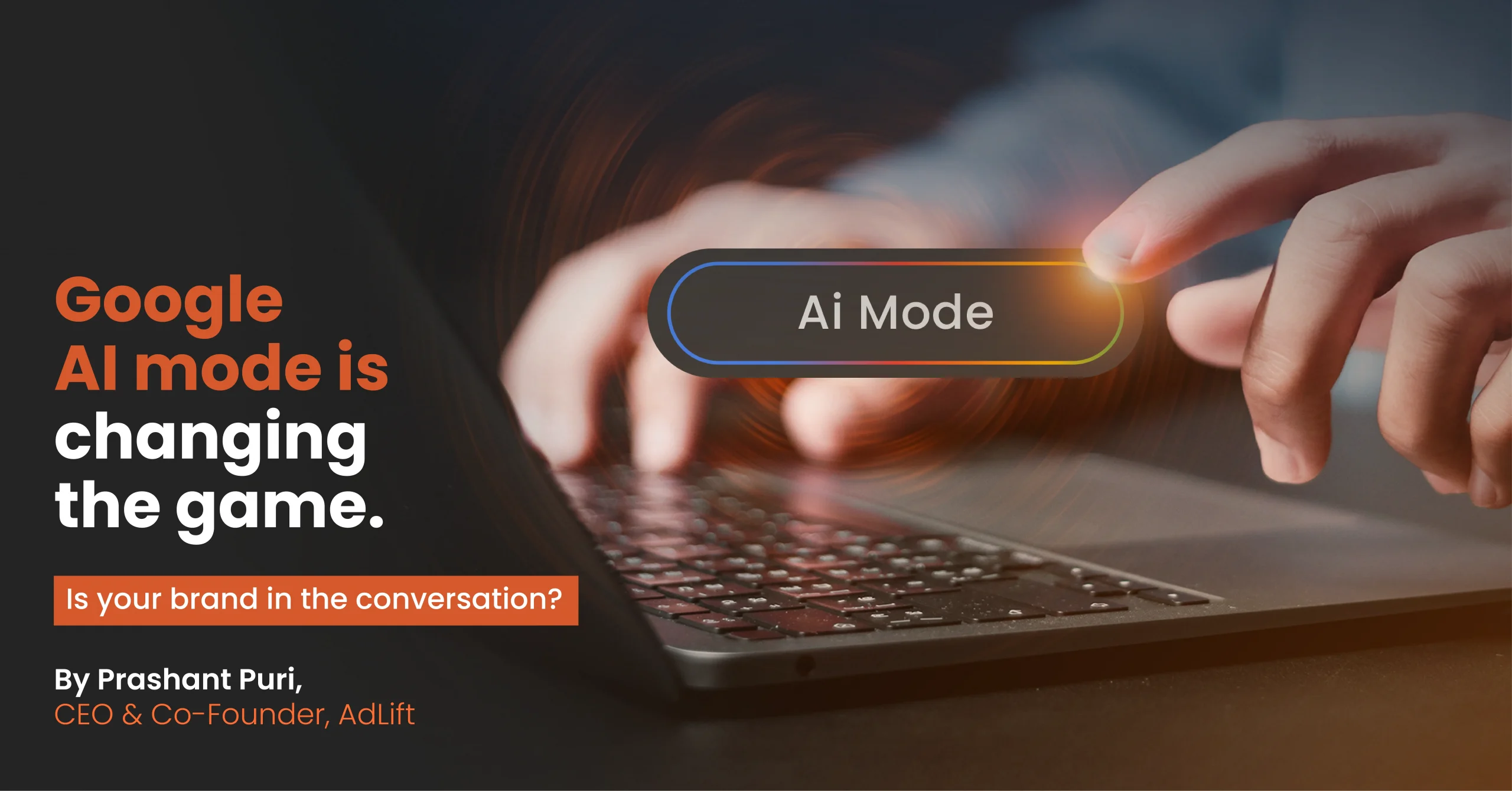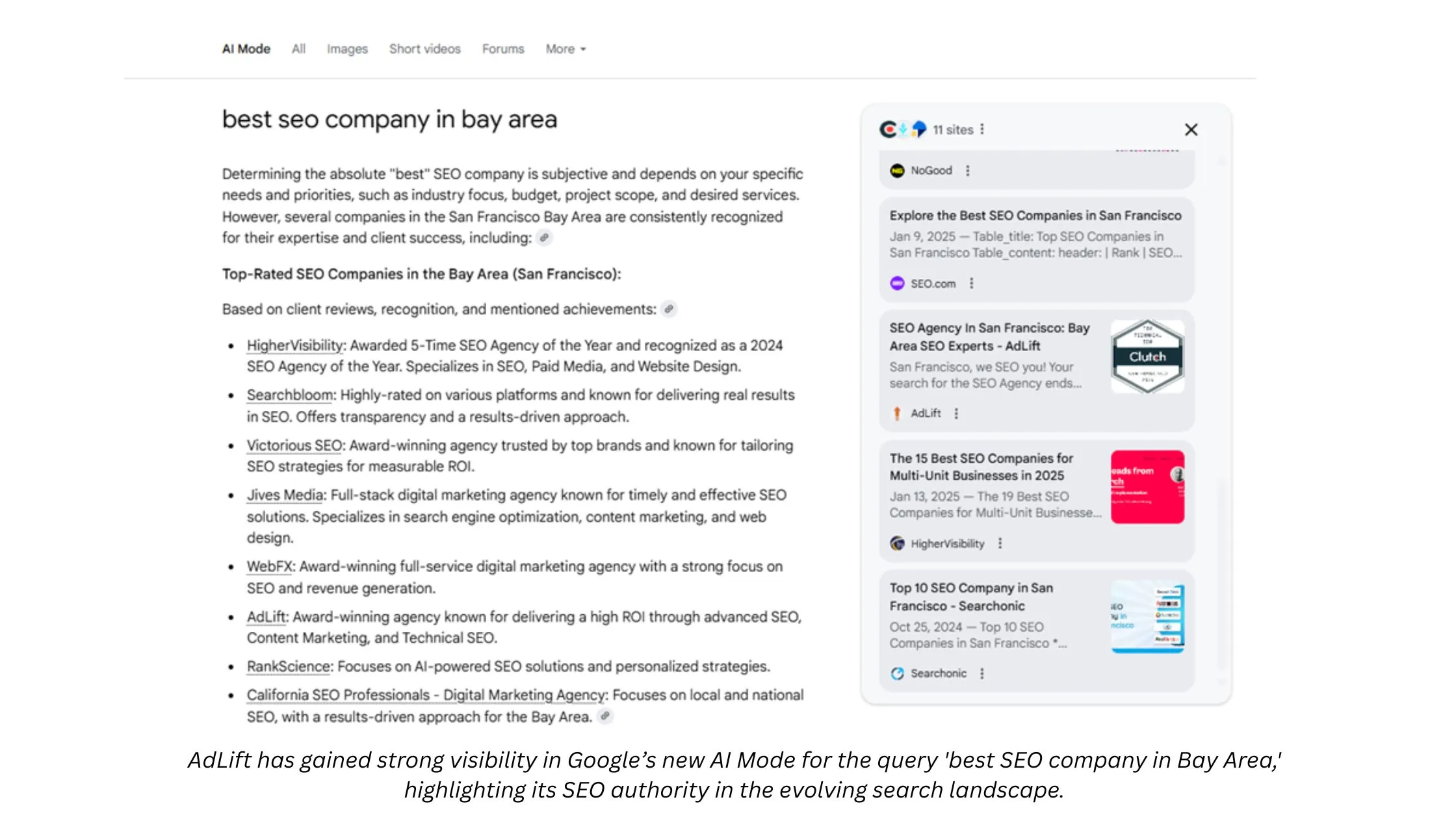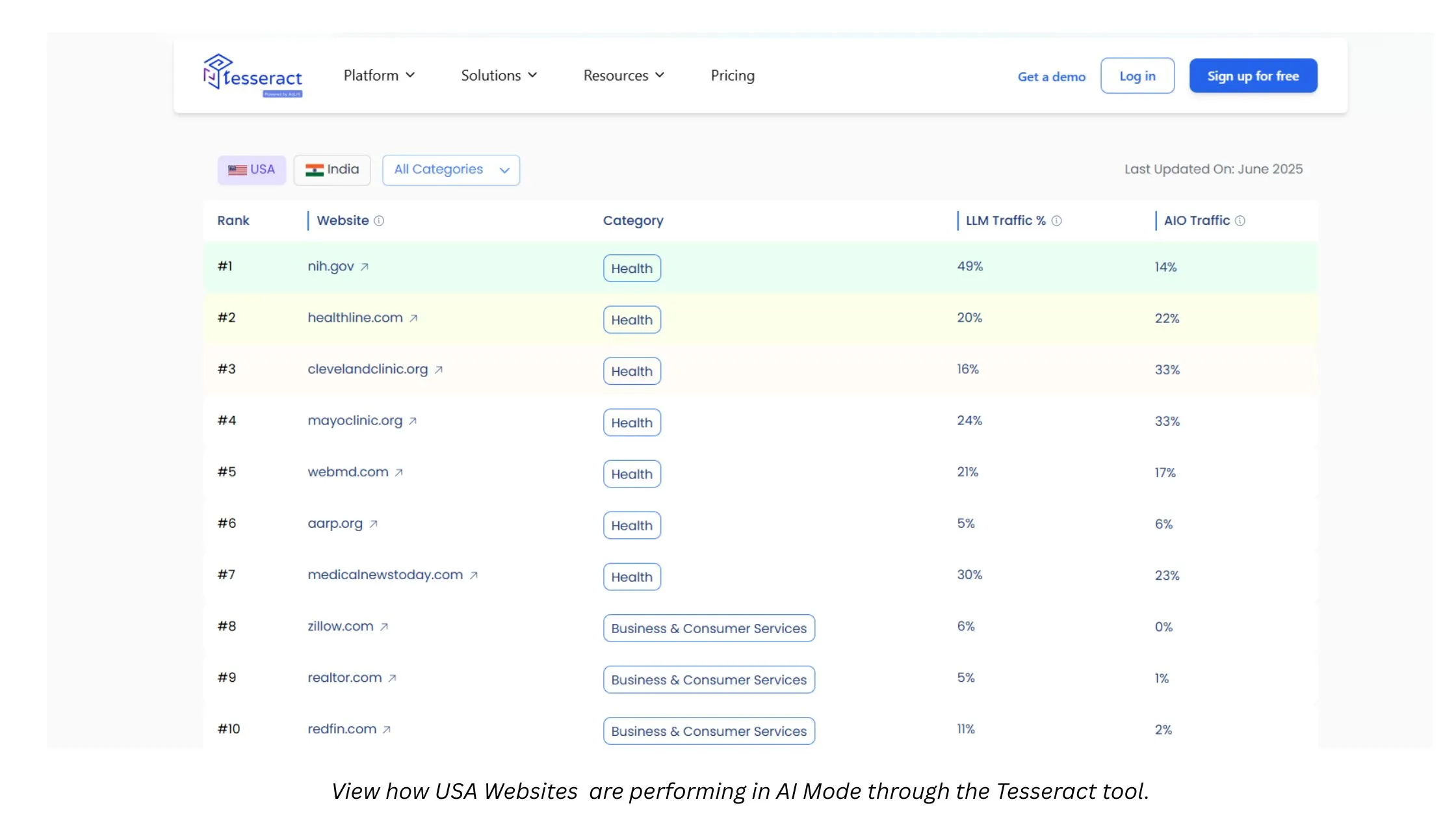Google AI Mode Is Changing the Game. Is Your Brand in the Conversation? By Prashant Puri, CEO & Co-Founder, AdLift

Google’s New AI Mode: All you need to know.
Search has fundamentally changed. Again.
On May 20, 2025, Google officially rolled out AI Mode to all users in the U.S., and while everyone was still obsessing over “rankings,” Google quietly pulled the rug from under traditional SEO. Today, AI Overviews are used by approximately 1.5 billion people monthly, indicating very high engagement with AI-synthesized search results. As someone who’s spent over 18 years at the intersection of SEO and innovation, I can tell you: this is not just another Google update. This is Google changing the game.
And the big question is: is your brand showing up in Google’s AI Mode, or are you getting edited out (of the future?)
What Is Google’s New AI Mode?
AI Mode is Google’s new conversational search interface that lives in a separate tab, alongside traditional search results. It’s designed for multi-turn dialogue and supports text, voice, and image inputs.
What makes it a game-changer:
- It uses Gemini 2.5’s query fan-out to break complex questions into multiple sub-queries.
- It pulls answers from across the web and combines them into a single generative summary.
- It’s agentic, which means it can do things for you: like booking tickets, finding local services, or recommending products… without needing to click anywhere else.
Google’s New AI Mode: All you need to know.
Search has fundamentally changed. Again.
On May 20, 2025, Google officially rolled out AI Mode to all users in the U.S., and while everyone was still obsessing over “rankings,” Google quietly pulled the rug from under traditional SEO. Today, AI Overviews are used by approximately 1.5 billion people monthly, indicating very high engagement with AI-synthesized search results. As someone who’s spent over 18 years at the intersection of SEO and innovation, I can tell you: this is not just another Google update. This is Google changing the game.
And the big question is: is your brand showing up in Google’s AI Mode, or are you getting edited out (of the future?)
Google AI Mode traffic in Search Console Performance Reports:
Marketers will soon have access to data from Google’s AI Mode via Google Search Console (GSC). This includes key metrics such as clicks – any time a user clicks through to your site from AI Mode; impressions – if your site appears in AI-generated responses, it’s counted; and position – each element in AI Mode will have a ranked position, determined by where it appears. Additionally, follow-up user interactions will be tracked as new queries. A critical caveat: GSC will only show whether your site appears, not your brand. That means a page from your site might show up without it being a branded recommendation – and vice versa, your brand could be recommended through third-party sources even if your own site doesn’t appear.
Google AI Mode SEO Impact:Less Traffic, More Intent
- Widespread AI Overviews and AI Mode adoption: Google Search Console now includes AI Mode metrics, so impressions, clicks, and average positions from AI-driven queries are visible alongside classic search data
- Usage prevalence exceeds 13%: AI Overviews (and by extension, Google AI Mode) now appear in over 13% of U.S. search queries, up from around 6.5% earlier in 2025.
- Click-through rates dropped 20–60%: Multiple studies link AI Overviews to a 20–60% decline in CTR, while technology outlets warn of potential 30–70% drops across different verticals
- Zero-click searches surge: Over 58% of searches now end without a click, driven by AI summaries, featured snippets, and knowledge panels on the SERP.
- Traffic losses of 15–70% reported: News publishers saw an average 15% drop, with some websites reporting up to 70% declines in organic traffic after AI Overviews began rolling out.
SEO in 2025 = AEO (Answer Engine Optimization)
We’ve entered a new acronym era. AEO is the name of the game.
To get cited in Google’s AI Mode, your content must:
- Be structured (use schema, FAQs, bullet points)
- Be concise and factual (AI doesn’t like fluff)
- Show authority and trust (backlinks + brand reputation still matter)
Bonus: multimodal content, infographics, data tables, even product videos, get preference. AI Mode isn’t just reading; it’s watching and listening, too.
Executive POV: Risks & Rewards
This change brings big risks, but it also brings even bigger opportunities
Risks
- You lose visibility if you’re not citation-worthy.
- AI hallucinations can misrepresent your brand.
- You no longer “own” how your brand is described AI does.
Rewards
- Higher-quality traffic.
- Visibility in zero-click environments.
- Access to new ad formats inside AI Mode (yes, ads are coming).
And here’s the kicker: this isn’t optional. If your brand isn’t being picked up by AI Mode, you’re invisible to the future of search.
What You Need to Do to Stay on Top of Google’s AI Mode:
Audit Your AI Visibility
Check if your brand is being cited in AI Overviews. Tools like Semrush and Tesseract (our AI search visibility platform) can help.
Upgrade to AEO
Forget long-winded blog posts. Think concise, well-structured answers. Add schema markup, FAQs, and data blocks.
Boost Domain Authority
You don’t need to rank #1, but you need to be authoritative enough to be cited.
Diversify Traffic Sources
Build your email list. Strengthen partnerships. Push on social. Don’t rely on Google to send you visitors.
Rethink Your Paid Strategy
AI Mode ads are coming; be ready to test and scale what works.
Prepare for Agentic Commerce
Your inventory, booking engine, and support stack should be AI-ready. Google is turning into a do-engine.
The Road Ahead
Make no mistake: AI Mode will likely become the default Google experience by 2026. The old-school 10-blue-links are fading. Fast. Gartner estimates a 25% drop in traditional organic traffic for non-AEO-optimized sites by the end of 2026. Publishers and brands that delay adapting will bleed reach, leads, and revenue.
But those that lean in? They’ll own the AI search shelf space, and that’s where the growth is heading. This shift isn’t just about SEO. It’s about how consumers discover, trust, and interact with your brand in an AI-first world.
My advice?
Don’t just track where you rank. Track whether AI is talking about you.
Because if it’s not, you’ve already lost the conversation.
In the age of AI-driven search, being visible in Google’s AI Mode is essential. Brands that optimize their content for this new interface will gain a competitive edge. Explore how our AI SEO services can help your business stay ahead by ensuring that your content is optimized for AI-powered search results.


